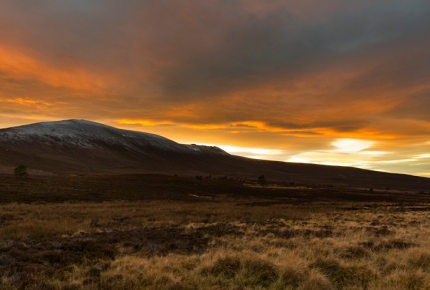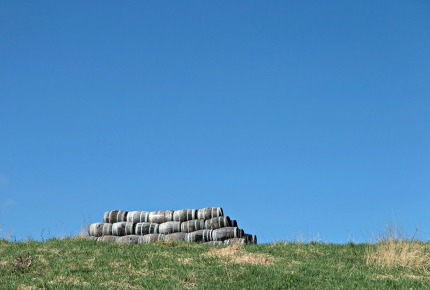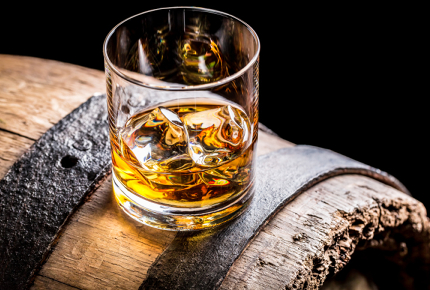Frontier spirit: A dispatch from the Whisky Trail
Chris Allsop treks Speyside’s Malt Whisky Trail, once the stomping ground for smugglers and illicit distillers, now the beating heart of Scotland’s whisky industry.
“Did you see the clock tower?”
I’m in the “Malt Whisky Capital of the World” Dufftown, Speyside, speaking with Mike Lord of The Whisky Shop Dufftown. I nod – you can’t miss it, the chunky clock tower dominates this small town.
“Well,” he continues, “there was actually an illegal distillery in the tower. And you think: surely the authorities would have smelled it? But Dufftown had so many distilleries that its smell just blended in with the general alcoholic atmosphere.”
It’s yet another tale of brazen outlaw distilling from the early to mid-1800s. I’ve also heard, while hiking through the epicentre of the modern malt whisky industry, that priests would stash illegal hooch in their pulpits; that Edinburgh’s Tron Church had an unlicensed still beneath its holy floor; that George IV drank only the illegal stuff; and that the outlaw distillers – often poor farmers trying to eke more money out of leftover barley before it rotted – had such popular support that government troops were often forced to retreat in the face of stick-wielding, stone-tossing mobs.
And a name that keeps coming up is George Smith, the founder of the Glenlivet Distillery, located on the edge of the Cairngorm Mountains. A hero now and villain then, Smith purchased the first licence to distil in 1824, bringing the authorities down upon his neighbours and obliging him to travel with a pair of hair-trigger pistols. Even Sue Wiles, senior guide of Glenlivet rival Glenfiddich, hurries me in that direction.
 Don your tweed and fill the hip flask for the Speyside Whisky Trail
Don your tweed and fill the hip flask for the Speyside Whisky Trail JASPERIMAGESCOTLAND / Thinkstock
“Go to the braes of Glenlivet,” she says. “It’s rife with smugglers’ trails.”
I heed her advice, walking briskly towards lawless Glenlivet, but find my pace slackening, my thirst for outlaws seeping away. As the temperature rises, the clotted sweetness of spring rises into the air. Songbirds sing from mossy trees, seedpods float away on the breeze and a grey heron glides over the tarry eddies of the River Spey.
The Malt Whisky Trail ties in with The Speyside Way – a scenic, long-distance walking trail that links the Moray Firth to the foothills of the Cairngorms. Much of it follows a disused rail line, while the Spey, Scotland’s fastest-flowing river, rushes alongside. It’s this abundance of fresh water, combined with the favourable climate and fertile earth that has made Speyside the epicentre of the malt whisky industry.
I press on and out of nowhere comes the unmistakable smell of malt and yeast – a distillery nearby. Perhaps it’s the lauded stills of Glenfarclas, run by a family that, for six generations, has named their sons either John or George.
That evening, at the atmospheric Cragganmore Hotel, I thumb through a copy of Alfred Barnard’s The Whisky Distillers of the United Kingdom over dinner. The Glenlivet entry reads: “Formerly smuggling houses were scattered on every rill, all over the mountain glens, and at the time the smugglers used to lash the kegs of spirit on their backs, and take them all the way to Aberdeen and Perth for disposal.”
I make a mental note to stop whinging about my knees.
 Barrels form part of the landscape near the Speyside Cooperage
Barrels form part of the landscape near the Speyside Cooperage Chris Allsop
The next morning, under an intermittently sunny sky, I set out along the Tomintoul Spur towards the Glenlivet Distillery. As I follow the trail through tobacco-coloured scrubland, startled grouse take to the skies and a cool breeze makes my nose run.
Happily, it isn’t long before I am ensconced in the Glenlivet Distillery, munching haggis crisps and listening as Ian Logan, the resident raconteur, regales me with the rest of the story.
It turns out George Smith had his distillery razed by vandals, and the relentless local opposition hampered him to the point of bankruptcy. Close to throwing in the towel, he was rescued by a financial gift from the Duke of Gordon, and Speyside’s future was secured.
By the 1840s, most of the illegal stills had been shut down and smugglers were forced to seek alternative, lawful employment. “Ironically,” adds Logan, “McPherson, the haulage company that moves most of the whisky in Speyside, is owned by a former smuggling family.”
I have a whisky for the road with Logan, before heading back out onto the smugglers’ trail. At the top of a nearby brae my labours are rewarded with a uniquely Scottish view that offers a choice of seasons: winter in the white horizon of the snow-capped Cairngorms, and spring in the emerald green glen below. I reach for the hipflask – it’s a fine place for a dram, legal or otherwise.
 Our favourite whisky buff reveals his "big drams" for 2015
Our favourite whisky buff reveals his "big drams" for 2015Shaiith / Thinkstock
Three of the best Speyside whiskies
The Whisky Shop Dufftown is one of the venues for the biannual Spirit of Speyside Whisky Festival (30 April – 4 May). Each year, whisky expert Mike Lord selects his “big drams”: whiskies that have caught his eye over the last 12 months, offering something a little different.
1. Glenfarclas 17 Year Old
New into the UK, this is a really nice, well-balanced Glenfarclas. Your go-to distillery for intense sherry cask whiskies full of dreed fruits, the 17-year-old – as Vicky, my shop manager, says – is almost taking them in a new direction as it’s not overly sherried, with an almost toffee edge.
2. BenRiach 12 Year Old
BenRiach is an independent distillery that offers a lot of different finishes and levels of peating. Their 12-year-old, also recently launched to the UK market, is an unpeated sherry-cask finish with a fantastic nose on it. It’s outstanding.
3. Benromach 10 Year Old 100 Proof
On the market for a few years, this is in effect a higher abv. of their Benromach 10 Year Old. Despite being made to the same recipe with the same cask make up, it’s so much more intense and complex – much more than just a slightly less diluted version of the 10-year-old, this tastes like an entirely different animal.
NEED TO KNOW
Macs Adventure organise superb, self-guided Speyside Whisky Trail packages, which blend world-class (and lesser-known) distilleries and picturesque hiking.
Three-night packages (available April to October) start from £245pp including accommodation, breakfast, daily baggage transfers and backup support).
For further information visit www.macsadventure.com and for more information on The Spirit of Speyside Whisky Festival visit www.spiritofspeyside.com.
Do you have any Feedback about this page?
© 2025 Columbus Travel Media Ltd. All rights reserved. No part of this site may be reproduced without our written permission, click here for information on Columbus Content Solutions.









 You know where
You know where